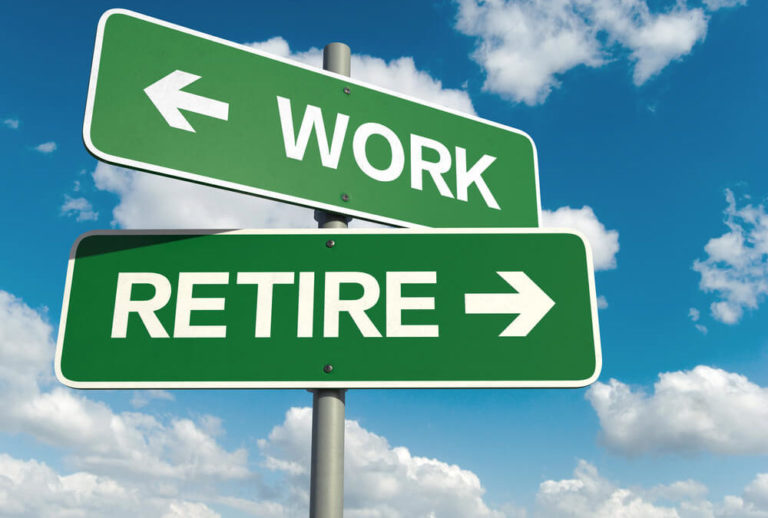IS PARTIAL RETIREMENT RIGHT FOR YOU?
What is Partial Retirement?
Partial Retirement or phased retirement is just what it sounds like. It’s downshifting from your fulltime job to something part time until you are ready to fully retire. People we talk with lately are looking for a way to gradually leaving the workforce instead of establishing a firm retirement date. You might
like this idea, because it can be a win-win for both you and your employer.
During the COVID-19 pandemic, we are experiencing the “Great Resignation” which has put a strain on employers to find qualified workers. By looking at part time work during the early ears of your retirement, you can take some stress off your savings as well as helping your current employer.
With my clients, I start by discussing the usual or traditional methods to create stable retirement income: pensions, investment income, social security, and savings. To make the income last as long as you do, we also need to understand the likelihood of success to determine if you will run out of money. We always want to have a stress-free retirement, so we need to find ways to take some of that pressure off the plan. Structuring a partial retirement (where you are still working sometimes) can be an overlooked tool.

The short answer is no one knows. However, life expectancy tables show we are living longer. We may need to prepare for 30 or more years living in retirement. Data pulled from a retirement trend study shows on average married couples over the age of 65, have more than 20% living past 90. Naturally, question arise with our clients: How can you prepare for a long retirement? Where and how will you have a monthly paycheck? In some cases, phasing out working by working for a few more years (aka a partial retirement) might be the answer.
Retirement planning should start early and today relies on your savings. So, ask yourself if you’ve saved enough? In our initial meeting, I ask new clients “What does it cost to be you?” Our first meeting will center around answering this question. Next we’ll establish a budget to make sure you have your basics covered. A study by the Federal Reserve shows only 36% of people are on track with retirement savings. If you are in this group, downshifting your work load, or continuing with part time work increases your success in retirement and take some stress off your savings.
how do i structure a Partial Retirement?
Partial retirement is a relatively new concept and many employers may not offer a hybrid option. especially if you are close or nearing “full” retirement age (66/67). When the previous generation retired, private companies would offer pensions. In the late 1970’s companies switched to a 401k model known as a defined contribution plan. This effectively changed how your retirement works. The burden of providing future paychecks is now on you. Social Security income is still available, but might not be enough. The Federal Reserve study indicates that today 25% of retirees are relying on additional income in retirement. Structuring a partial retirement can be easier than you think.
Some employers are experiencing the “brain drain” effects of the current mass retirement. Recently, some of our clients have simply expressed interest to their current employer for reduced hours. Surprisingly the first step to phasing into full retirement might be to ask your current employer. This may simply allow you to continue working part time before you fully retire. If that does not work, we suggest finding something you enjoy doing. Our clients are working at the ballpark, Red cross, golf course or at the grocery store. These positions often come with flexibility, reduced income, but enjoyment of purpose.
How much is enough: At Sachs Financial, we believe that you will need to have sufficient money not just for the fixed expenses (the paychecks),but you must have additional funds (play checks) to help with all of the extras in retirement. Part of our discussion will help pin down these amounts. So, how much do you need to save? It depends on where you retire, you might need more in your bank account. Missouri is in the bottom 20 states for overall expected cost of living, where Illinois is in the top 20.
Longer Life: Most of us plan on living longer than the generation before us in part because medical and healthcare advances. Although the pandemic decreased our life expectancy in 2020 (data from the CDC), we are still living longer. The life expectancy in the United States for married couples over 65 has an averaged life expectancy of 88 years old, and one of you has a 20% chance of living well into your 90s. So if you retire in you early 60s, you need to plan for 30 year of income. It’s not about how much you have, it’s about how much you spend. And to make sure you have enough to spend, we must maximize your retirement paychecks. The longer you wait to take your social security, pensions, and draws from savings, the better our probability of success becomes. Having other income either from passive rental income, or continuing to work by phasing it out through partial retirement can help. The more time we have to work your plan, defer future income sources, the stronger your overall plan will be.
Medicare: Medicare does not start until 65. Today, the largest expense you will have in retirement is your healthcare premiums. Employers today are almost begging people to work today, and that puts you in the driver’s seat. Part time work may come with health benefits. With today’s shortage of employees, employers are offering more benefits. Until something changes, you are responsible for your healthcare. And prior to Medicare, you are left to figure it out. Many people delay retirement plans or have one spouse work just to maintain healthcare benefits.
Staying put: Some of our clients have stopped working full-time and moved to a phased retirement allowing them to continue part-time. Recently our clients tell stories of how they left a full time position only to be called back as a consultant. This allows you to continue to work with the flexibility and you want in your retirement. Remember Age is just a number, how old you are is a state of mind. Several studies have also concluded that having a reason to get out of the house, have social interactions, and receive a paycheck translates into a longer lifespan.
Structure: These same studies also show retirement can increase the likelihood of suffering from clinical depression by as much as 40%. Going from a structured work schedule to potentially having nothing to do and nowhere to be is a scary prospect. We want to make sure you have a plan to bring some structure back into your life after work.
The idea of not knowing what comes next can be scary and we are proponents of phasing into full retirement with a hybrid work schedule. We know that it’s possible to succeed with the correct plan.
Steps to Successful Income:
When we plan your income, we look for multiple income streams that provide an increasing income so your spending power does not diminish. Step one is to figure out how to create the right amount of both paychecks and play checks. In reviewing your savings, and all sources of available income (think social security and company pensions) we’ll fill the gaps so you can live the life you want.
1) Start-Stop-Start
Historically the advice is to wait and claim social security when you’ve reached full retirement age (FRA) of 66/67. But, when you retire early, the in-between years can be difficult to create the needed income. There is a strategy that relies on starting your Social Security income as early as 62. It will provide income when you need it while taking advantage of how the Social Security program works. In short, you turn it on at 62, stop it at your FRA to receive the 8% deferral credits, and finally restart at 70 with an increased income. But, by using our strategy of “start, stop, start” you can get a jump start on your retirement. You can read more about the “Start, Stop, Start” approach we recommend in this recent blog: Start, Stop, Start Social Security
2) Annuities, Lifetime Income
3) Partial Retirement
As you have seen, this is a way to take the pressure off your savings and retirement plan. Most importantly, a hybrid retirement can help provide structure to your early years of retirement. A partial early retirement can be a reality for you, if we start planning it today.



